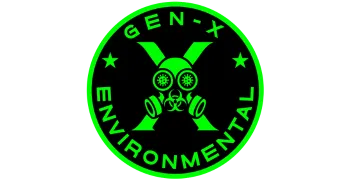FAQ
Don’t see your question? Chat with a team member using the chat widget and we’ll help right away.
Do I need an asbestos inspection before remodeling or demolition?
Often yes. Federal rules require a thorough asbestos inspection before many renovations and all demolitions in non-residential buildings; Colorado also sets state requirements that apply widely and include residential scenarios. Check your project type to confirm.
What are Colorado “trigger levels,” and why do they matter?
They’re thresholds of asbestos-containing material that, when exceeded, can require state notice/permits and specific work practices. For single-family primary residences, Colorado uses 50 linear feet (pipe insulation), 32 square feet (other surfaces), or one 55-gallon drum by volume.
How far in advance must I notify the state?
Colorado generally requires 10 working days’ written notice before covered abatement or demolition work begins (limited waivers exist).
I’m a homeowner—can I do asbestos removal myself?
Colorado allows a homeowner to perform abatement only in their own primary-residence single-family home; many other projects require a certified contractor and notice/permit rules can still apply.
What is Final Air Clearance (FAC)?
After abatement, an independent Colorado-certified Air Monitoring Specialist performs a final visual inspection, then conducts aggressive clearance air sampling following EPA method; a formal clearance report is required.
Where is asbestos commonly found in older buildings?
Pipe/boiler insulation, sprayed fireproofing, floor and ceiling tiles, roofing, textured coatings, and cement products, among others.
Can I tell by looking if a material contains asbestos?
No. Identification requires sampling by a qualified professional and analysis by an accredited lab.
Is mold regulated—are there legal exposure limits?
There are no federal exposure standards for mold. Agencies provide guidance (fix moisture, remove visible mold) rather than numeric limits.
Why is mold a concern and what symptoms can it cause?
Damp/moldy environments can trigger nasal irritation, cough/wheeze, skin/eye irritation; people with asthma, allergies, or compromised immunity may react more severely.
What standard do pros follow for mold remediation?
The industry reference is ANSI/IICRC S520, which outlines containment, removal, and verification practices to prevent cross-contamination.
Do I need special precautions for pre-1978 homes?
Yes. EPA’s Lead Renovation, Repair and Painting (RRP) Rule requires lead-safe certified firms and specific work practices when disturbing paint in pre-1978 homes, child-care facilities, and preschools.
What tests are used to check for lead hazards?
Common methods include XRF screening, paint-chip lab analysis, and dust-wipe sampling to assess hazards and clearance after work.
